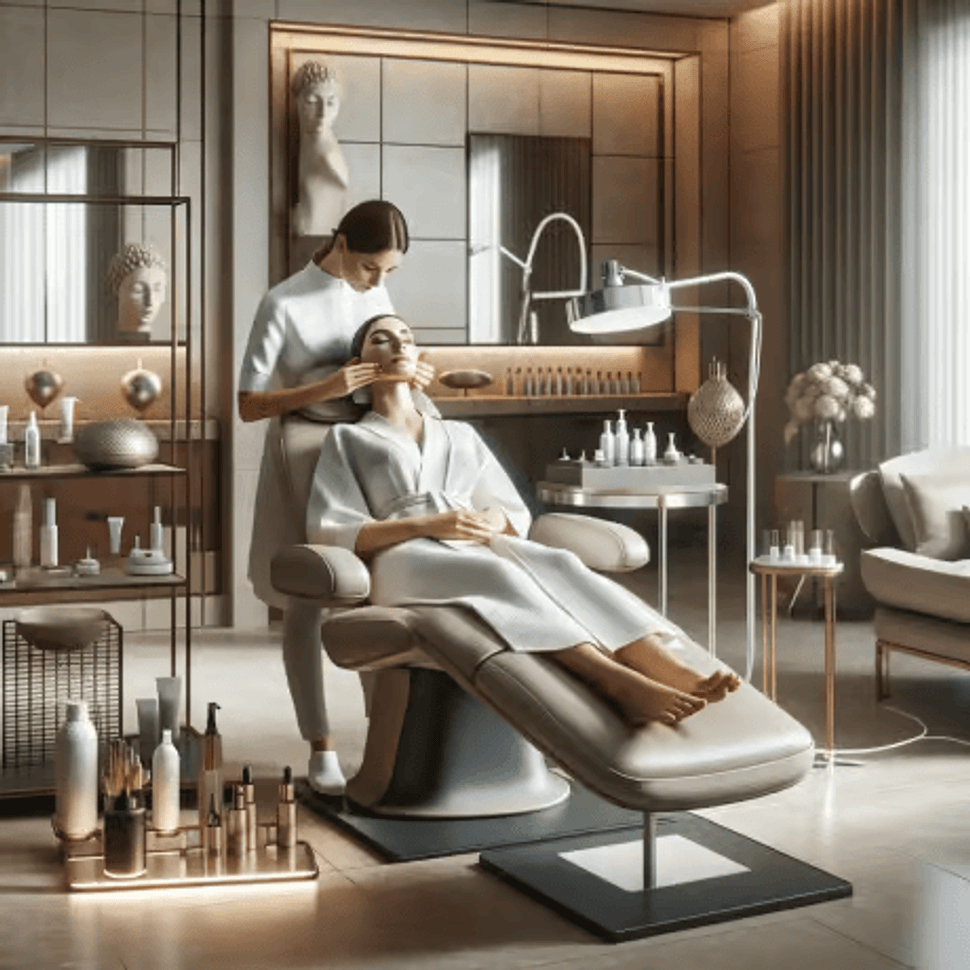
Understanding Facial Contouring: A Comprehensive Guide for Spa Professionals
Posted by The MassageTools Team on Mar 12th 2024
Facial contouring stands as a key beauty and spa treatment, providing a non-invasive way to enhance facial features for a sculpted look. Spa professionals enhance their services by mastering this art, attracting clients seeking the latest cosmetic enhancements. This guide explores facial contouring's techniques, benefits, and essential tools for outstanding results on a quality spa bed.
Table of Contents
What is Facial Contouring?
Facial contouring reshapes and defines facial contours, enhancing aesthetic appeal. This technique uses pressure and massage to sculpt facial muscles, yielding a toned, youthful look. It targets cheekbones, jawline, and temples, reducing sagging skin and enhancing symmetry.
Spa professionals must grasp different facial contouring methods. They combine manual techniques and tools, offering tailored treatments. Methods range from lymphatic drainage to microcurrent devices, meeting diverse client needs.
Facial Contouring Market
Facial contouring massage has gained popularity as a non-invasive technique to shape and define the facial structure, enhance lymphatic drainage, and improve skin appearance. This type of massage incorporates various methodologies, including lymphatic drainage techniques, deep tissue manipulation, and acupressure, tailored to promote detoxification, reduce puffiness, and enhance the overall contour of the face.

The market for massage therapy services, which includes facial contouring massages, is witnessing significant growth. The demand for these services is expected to rise substantially, driven by increasing awareness of wellness and self-care, along with a growing preference for non-invasive cosmetic enhancements. The massage therapy service market is projected to expand at a promising CAGR of 8.4% from 2024 to 2034, indicating a robust demand for these services.
The facial contouring massage, often referred to as a technique for achieving a “smaller face,” combines lymphatic drainage with firmer massage strokes. Mika Takeda, General Manager at Queen’s Market, explains that this treatment flushes toxins from the system, aiding in reducing puffiness, lifting sagging skin, and enhancing the skin’s appearance by improving blood circulation.
Techniques and Tools for Optimal Results
Facial contouring encompasses a myriad of techniques, each designed to address specific concerns and deliver targeted results. Manual massage techniques, such as effleurage and petrissage, play a pivotal role in stimulating circulation, promoting lymphatic drainage, and sculpting facial contours. Additionally, the integration of gua sha tools, facial rollers, and microcurrent devices can amplify the benefits of traditional massage, enhancing muscle tone and promoting collagen production for long-lasting results.
When selecting tools for facial contouring treatments, it’s crucial to prioritize quality, versatility, and ease of use. Opt for tools crafted from durable materials such as rose quartz or jade, which not only provide optimal glide but also impart soothing and cooling effects to the skin. Furthermore, investing in multifunctional devices that offer adjustable settings and interchangeable attachments can streamline your workflow and cater to a diverse range of client needs.
Tips for Beauty Professionals in Facial Contouring
1. Stay Educated:
Continuously expand your knowledge and skills in facial contouring by attending workshops, seminars, and advanced training courses. Stay updated on the latest techniques, tools, and trends to offer cutting-edge treatments to your clients.
2. Customize Treatments:
Take the time to assess each client's unique facial structure, concerns, and goals while they're positioned comfortably in a treatment chair before recommending a facial contouring treatment. Tailor your approach to address specific areas of concern and deliver personalized results that exceed expectations.
3. Communicate Effectively:
Establish clear communication with your clients to ensure they understand the benefits, process, and expected outcomes of facial contouring treatments. Address any questions or concerns they may have and foster a trusting and collaborative relationship throughout the treatment journey.
4. Focus on Technique:
Master the art of manual massage techniques and familiarize yourself with the proper usage of facial contouring tools. Practice precision and control to effectively target key facial muscles and achieve optimal results without causing discomfort or bruising.
5. Prioritize Safety:
Adhere to strict hygiene and sanitation protocols to maintain a clean and safe environment for your clients. Regularly sanitize your tools and equipment, and follow industry guidelines to minimize the risk of cross-contamination and ensure client satisfaction.
6. Offer Home Care Recommendations:
Empower your clients to prolong the benefits of facial contouring treatments by providing them with personalized home care recommendations. Recommend skincare products, facial exercises, and lifestyle adjustments to support their skincare journey and enhance treatment outcomes.
7. Encourage Regular Maintenance:
Educate your clients on the importance of regular maintenance sessions to preserve and enhance the results of facial contouring treatments. Offer package deals or loyalty programs to incentivize repeat visits and foster long-term relationships with your clients.
8. Seek Feedback:
Solicit feedback from your clients to gauge their satisfaction with the treatment experience and outcomes. Use their input to refine your techniques, improve service offerings, and ensure continuous growth and success in your facial contouring practice.
Manual Facial Contouring Techniques
Effleurage:
Effleurage involves gentle, sweeping strokes applied to the face using the fingertips or palms. This technique helps to increase blood circulation, reduce tension, and prepare the skin for deeper contouring maneuvers.
Petrissage:
Petrissage entails kneading and lifting movements performed with the fingers and palms. By targeting deeper layers of tissue, petrissage helps to release muscle tension, improve lymphatic drainage, and sculpt facial contours for a more defined appearance.
Tool-Assisted Facial Contouring Methods
Gua Sha
Gua sha involves the use of a smooth, flat tool made from jade or rose quartz to perform scraping motions along the contours of the face. This technique helps to stimulate circulation, reduce inflammation, and promote lymphatic drainage, resulting in lifted and sculpted facial features.
Facial Rollers
Facial rollers, typically crafted from jade or rose quartz, feature a smooth, rolling surface that glides effortlessly over the skin. By applying gentle pressure and rolling motions, facial rollers help to stimulate blood flow, reduce puffiness, and enhance facial contours for a more sculpted appearance.
Advanced Facial Contouring Technologies
Microcurrent
Microcurrent technology utilizes low-level electrical currents to stimulate facial muscles and promote collagen production. By targeting specific muscle groups, microcurrent treatments help to lift, tone, and sculpt facial contours, resulting in a more youthful and rejuvenated appearance.
Radiofrequency
Radiofrequency treatments deliver controlled heat energy to the deeper layers of the skin, stimulating collagen production and tightening lax tissues. This non-invasive technique helps to sculpt facial contours, reduce wrinkles, and improve skin firmness for a more lifted and defined appearance.
Wrapping Up
In conclusion, facial contouring represents a dynamic and lucrative opportunity for spa professionals to elevate their expertise and meet the evolving demands of today’s beauty enthusiasts. By mastering the art of facial sculpting and embracing innovative techniques and tools, including investing in a professional electric massage table, you can position your spa as a premier destination for transformative skincare solutions.



